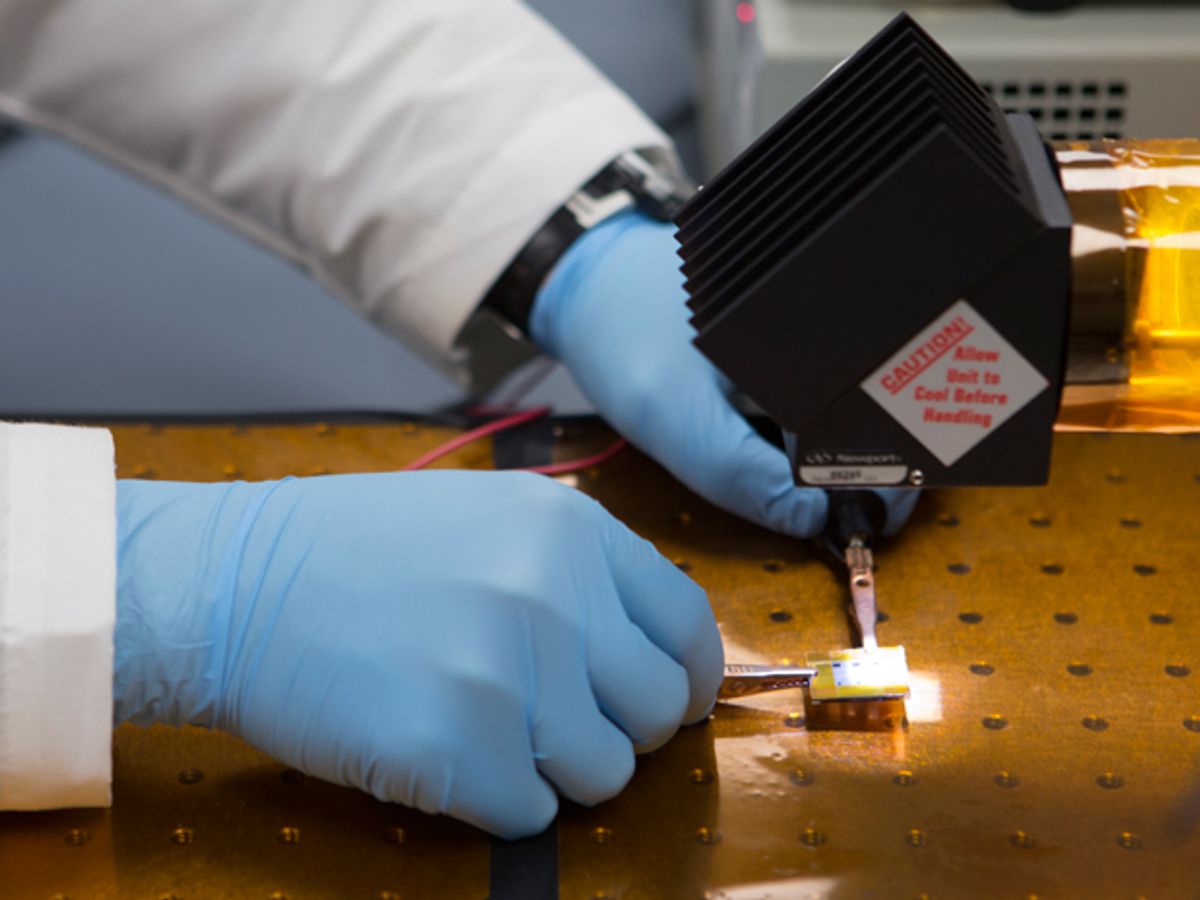The hunt by researchers for applications of graphene in photovoltaics has been, for the most part, limited to serving as a replacement to indium tin oxide (ITO), which is used as the transparent electrodes in organic solar cells. That started to change last year when researchers started to look at the potential of graphene in the conversion and conduction layers of solar cells.
Now researchers at the University of Cincinnati are experimenting with adding a small amount of graphene flakes to polymer-blend bulk-heterojunction (BHJ) solar cells and are finding that it improves the conversion efficiency of the cells significantly. The semiconducting part of a BHJ solar cells is made from two different materials—an electron donor and an acceptor. Light forms excitons at their interface, which separate into holes and the electrons producing a voltage. In the work performed by the Cincinnati researchers, they have discovered that they can increase the ratio of electron donors to electron acceptors to boost the energy absorbed by the cell.
“Because graphene is pure carbon, its charge conductivity is very high,” said Fei Yu, a University of Cincinnati doctoral student, in a press release. “We want to maximize the energy being absorbed by the solar cell, so we are increasing the ratio of the donor to acceptor and we’re using a very low fraction of graphene to achieve that.”
In research, which was presented 3 March at the American Physical Society Meeting in Denver (“Graphene-Based Polymer Bulk Heterojunction Solar Cells”), Yu reported a three-fold increase in energy conversion efficiency over typical polymer-blend BHJ solar cells.
“The increased performance, although well below the highest efficiency achieved in organic photovoltaic devices, is nevertheless significant in indicating that pristine graphene can be used as a charge transporter,” said Yu in the release.
The next step for the Cincinnati researchers will be to characterize the physics of the device, its film morphology and how to control and optimize the distribution of the graphene flakes to achieve better performance.
At present, no conversion efficiencies have been provided in the release or the abstract of the research. To give it some context, one of the highest reported conversion efficiencies for a polymer solar cell was as high as 10.6 percent for cells with more than one p-n junction. And those with a single junction have reached nearly 9 percent, with the expectation that they could exceed 10 percent in commercial products.
Improved conversion efficiency is just one of the issues that needs to be addressed in polymer solar cells. Reducing the cost of the materials that make up the modules (namely the ITO) is another for which graphene is being heavily researched. The next thing is to make the polymer solar cells survive in outdoor environments. With graphene’s nearly mythical strength, maybe it could help out there too.
Dexter Johnson is a contributing editor at IEEE Spectrum, with a focus on nanotechnology.



